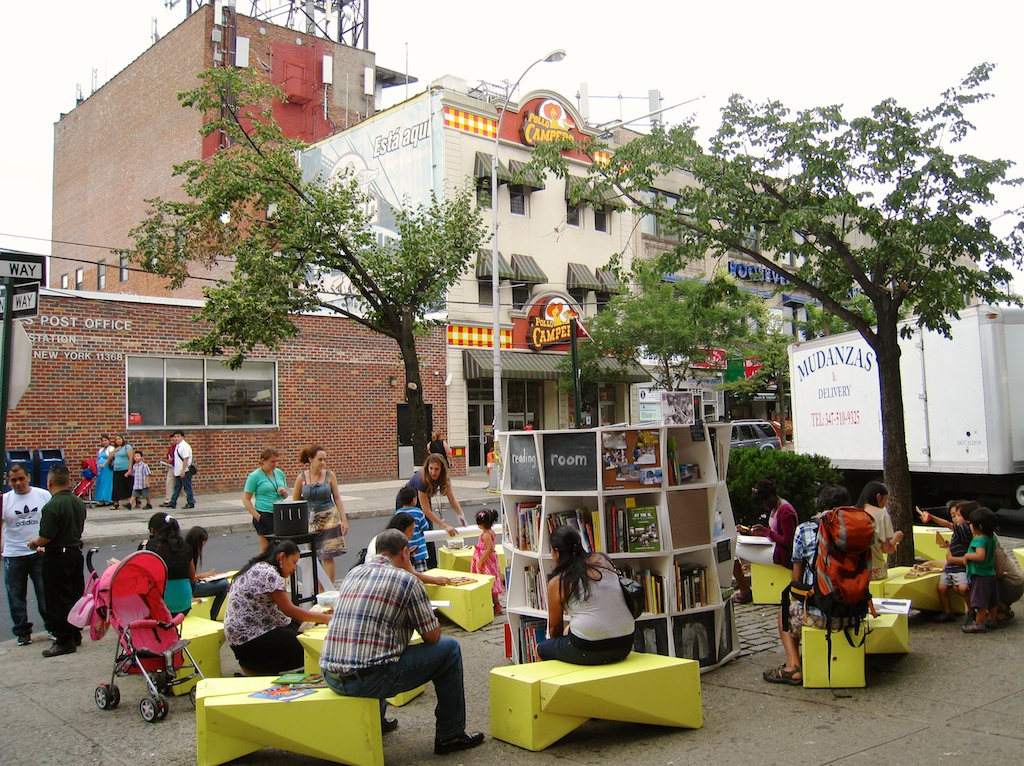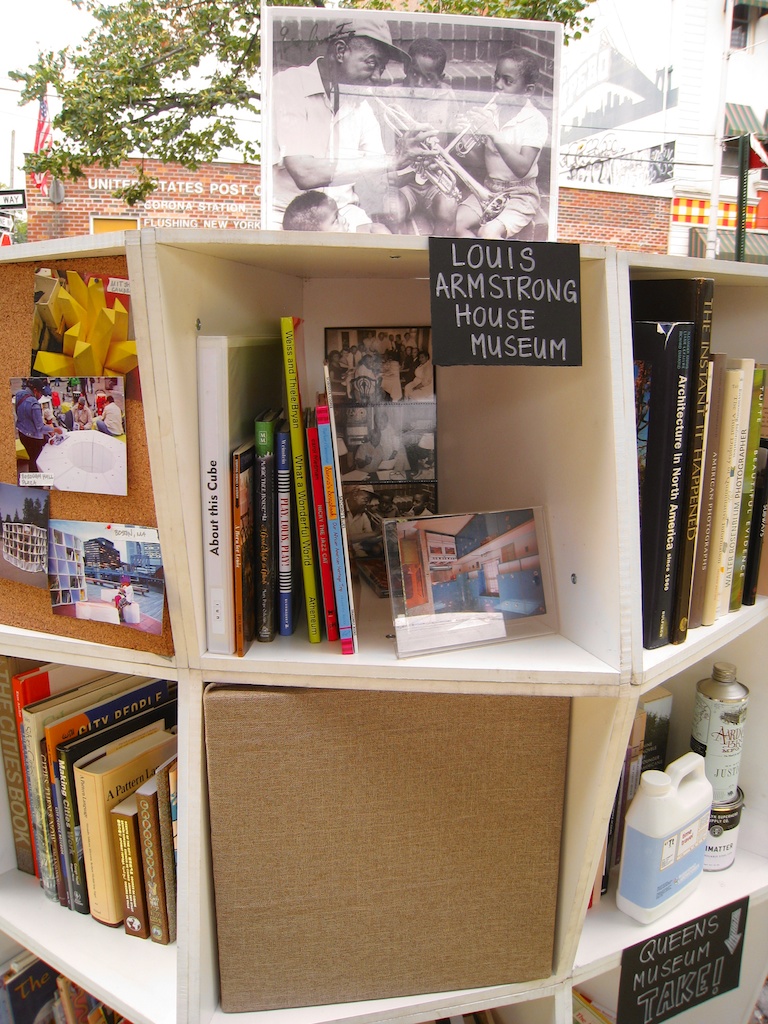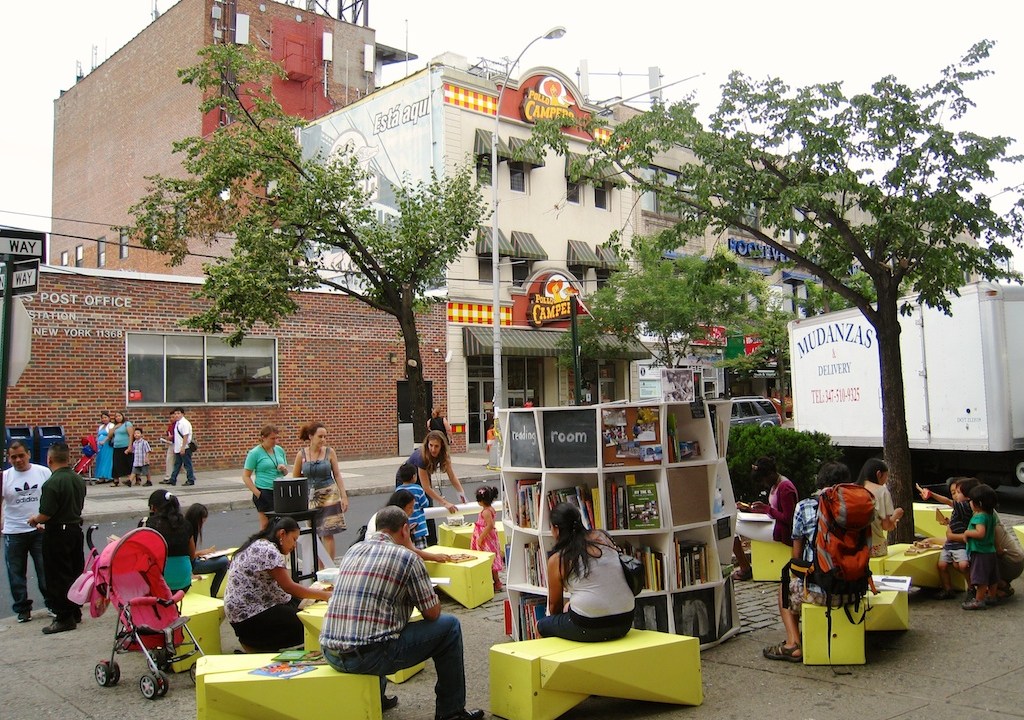Last month, Nate Rudy shared his hope that museums would pop up more often in storefronts to help revitalize small towns. This week, guest blogger Leslie Davol, pushes us to go even further, based on her experience creating distributed cultural experiences via the Street Laband Uni Projects.
The future of museums can include public space, even outdoor public space. A commitment to bring museum programs to plazas, parks, town squares, and even farmers markets and malls—the places where we already gather—will benefit our culture, our cities, and museums themselves. And it will signal what we, as a society, value. What we put in public space, be it a monument, a sculpture, or an activity, says the world about our priorities. All too often we end up erecting billboards. By showcasing the work of librarians, teachers, and museum educators on a very public stage, I believe we can move the needle away from a culture of consumption towards a culture of learning.
I worked in museums in New York City for many years before moving to Boston in 2006 and working with my husband to start a nonprofit called Street Lab. Together we produced cultural and educational programs for public space: outdoor films on a vacant lot; performing arts rehearsals, visible from the street and open to the public. We also launched a project called the Storefront Library—a community library in a vacant storefront in Boston’s Chinatown, which convinced us to focus on developing more small-scale, library-like community spaces. When we returned to New York City in 2011, we launched the Uni Project, which offers a portable reading room for public space.
 |
The Uni in Corona, Queens. July 29, 2012.
Photo courtesy of The Uni Project |
The Uni Project aims to do one thing and do it well: temporarily transform almost any available urban space into a public reading room and venue for learning. We deploy an architect-designed system of cubes and benches, a collection of books and learning activities, and a dedicated staff of volunteer educators. We believe that books and learning experiences should be prominent, accessible, and part of our street-level experience in cities.
In 2012, our team installed the Uni ten times, in seven New York City neighborhoods, including a park in hurricane-damaged Red Hook, Brooklyn. We purposefully chose a variety of environments: plazas, farmers’ markets, “playstreets”, and street festivals. We partnered with a variety of organizations, including both the Queens and Brooklyn public libraries. And we partnered with museums, which will be a growing focus of our work in 2013.
 |
Cube curated by the Louis Armstrong
House Museum, Corona, NY
Photo courtesy of the Uni
Project |
We initiated our museum partnerships by inviting institutions located near our sites, such as the Louis Armstrong House Museum, the NY Hall of Science, and the Museum of the Chinese in America, to curate a cube of booksfor the Uni. We added audio and images to some of these cubes, but the initial focus was a collection of browsable books that gave the public a taste of each museum. In 2013, our goal is to add more objects and activities to these museum cubes, in line with other cubes we’ve created that go beyond books.
The Uni is an opportunity for museums to create a concise experience, in a 14″ cube, for a walk-up urban audience. With these cubes, we take a mosaic approach to programming public space. The Uni provides a framework for involving multiple institutions, side-by-side, sharing a physical infrastructure and relying on volunteer educators who relish the opportunity to work in public space. Few institutions have the resources to program a public plaza for an entire day, but together many institutions can create a critical mass that serves thousands of people with a mix of content.
What Uni offers the public is not particularly new. Like a traditional library or museum, the project provides a place to go, a collection, an opportunity to learn, and a dedicated staff to oversee the experience. What’s new is where we’re offering it: in public space, right in the heart of things, on a kind of stage that we believe will make people come to expect and demand more such opportunities as part of the urban cultural mix. And that’s good for everyone.
Elizabeth Merritt












